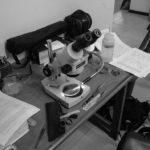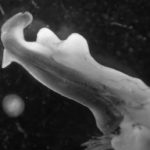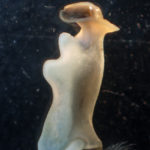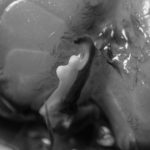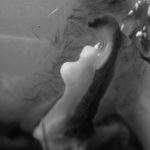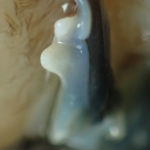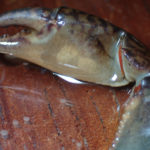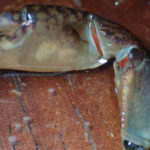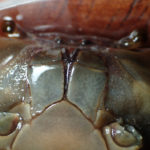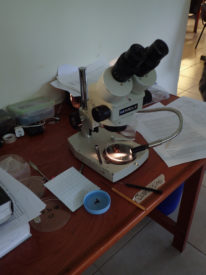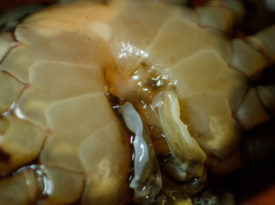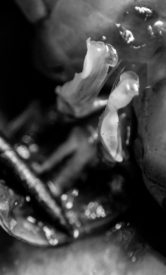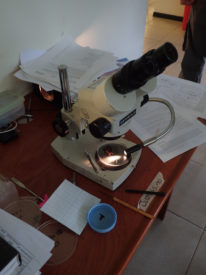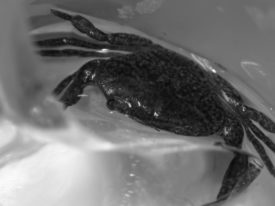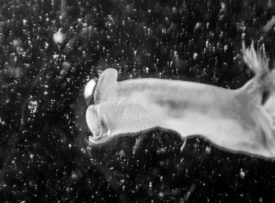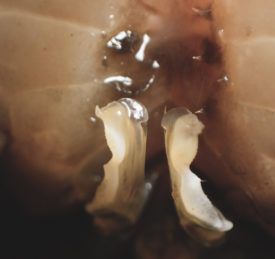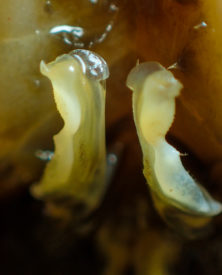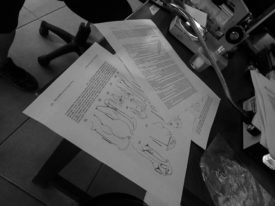To some degree, I have been working with crabs at Las Cruces since 2013, and I have identified only a handful of males using various keys (the latest by Magalhaus et al 2015). This year, I aimed to identify all the crabs we caught and studied if we could, so Gabby, Juliet and I sat down to identify two males, randomly chosen from a set we had discovered trematode metacercariae in, using the key.
As we slowly moved through the key towards Allacanthos pittieri which I had previously identifed in other summers and a few days earlier as a brush up, Gabby expressed some skepticism and challenged my guidance through the key. I dismissed her concerns to some degree (and I hope she’ll forgive me) as we worked through defining the terms in the first couplet, but eventually had a look at her crab’s gonapods (the structures used to transfer sperm in decapods and commonly used to identify them to species). I immediately and excitedly knew she had something else.
The three of us spent the rest of the day keying the new crab and confirming the identity of the other, and it was glorious. There is nothing cooler than working with engaged, enthusiastic, and smart students… especially on something as cool as a second crab species!
While I think we stumbled on a couplet (11) and eventually mis-identified the crab as Ptychophallus montanus, I think we’re confident that the other species of crab is P. paraxanthusi. At this point, we’re working on markers of the crab that don’t involve microscopy and allow us to identify the females.

